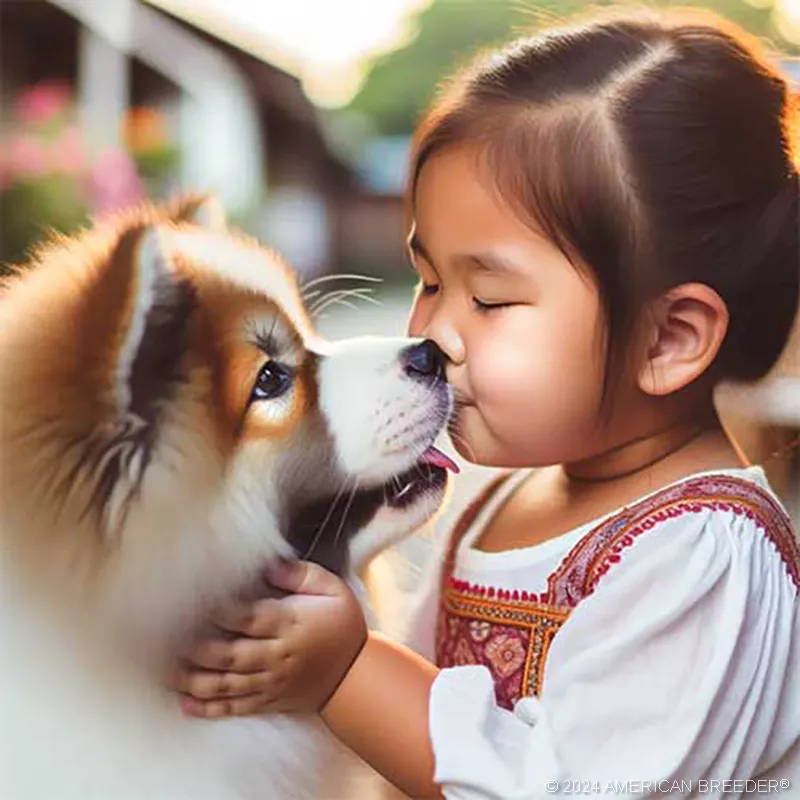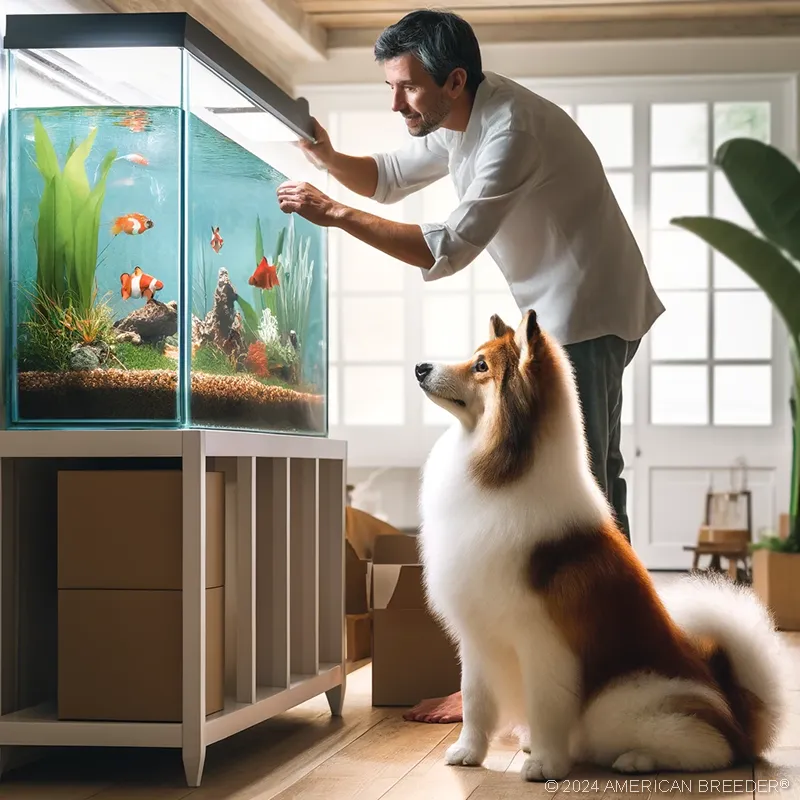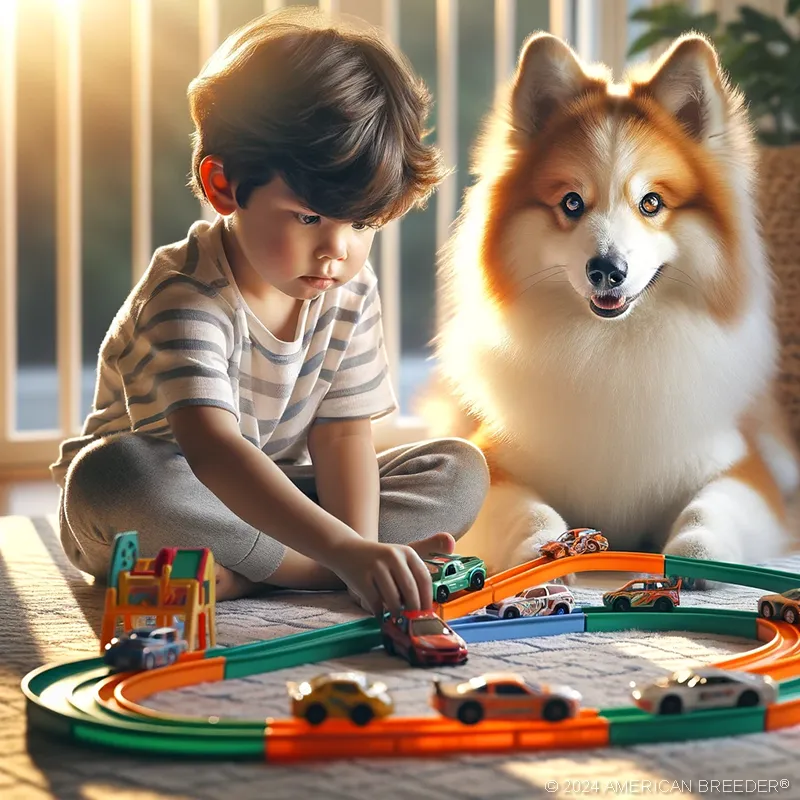Everything You Need to Know About Thai Bankaew Dogs
Introduction and Breed Background
 The Thai Bankaew Dog, often referred to as the "Thailand Village Dog," is a breed with a rich history and unique traits. Originating in Thailand, these dogs have been loyal companions to the people of Southeast Asia for centuries. Though not as famous as some other breeds, their importance in Thai culture is immense.
The Thai Bankaew Dog, often referred to as the "Thailand Village Dog," is a breed with a rich history and unique traits. Originating in Thailand, these dogs have been loyal companions to the people of Southeast Asia for centuries. Though not as famous as some other breeds, their importance in Thai culture is immense.
History and Cultural Significance
The Thai Bankaew Dog's history is deeply intertwined with the people of Thailand. Initially bred as versatile working dogs, they helped with various tasks around Thai villages, including hunting, guarding, and serving as companions for fishermen. Their adaptable nature and loyalty made them indispensable to the communities they served.
Distinctive Features
One of the most notable aspects of the Thai Bankaew Dog is its distinctive appearance. These medium-sized dogs have well-proportioned bodies and a sturdy build. Their erect ears and expressive eyes give them a keen and alert look. Coat colors and patterns can vary, with some having short, dense coats while others have a more wiry texture. Their curled tails add to their unique charm.
Name and Nicknames
The Thai Bankaew Dog is known by various names, including "Bangkaew," "Baengkaeo," or "Ban Kaeo." In Thai, "Ban Kaeo" means "home crystal," reflecting the idea of these dogs being cherished family members and protectors of the home. They are also affectionately called "Village Dogs" due to their close association with rural life in Thailand.
 Purpose and Original Use
Purpose and Original Use
These dogs were originally bred for practical purposes, showcasing their versatility and capabilities. They were used for hunting small game, guarding homes and farms, and providing companionship to their owners. Their ability to adapt to various roles made them invaluable to the Thai people.
In the following chapters, we will explore the Thai Bankaew Dog's characteristics, temperament, training needs, health considerations, and practical aspects of ownership. Join us on this journey to discover the fascinating world of the Thai Bankaew Dog.
Dog Characteristics
The Thai Bankaew Dog has a unique combination of physical traits that make them stand out. In this chapter, we'll explore their size, weight, activity level, and distinctive physical appearance to give you a comprehensive understanding of what makes these dogs special.
Size, Weight, and Activity Level
Thai Bankaew Dogs are medium-sized, with males typically standing between 18 to 22 inches at the shoulder and females slightly smaller. They generally weigh between 35 to 55 pounds. These dogs are known for their agility and endurance, making them well-suited for active lifestyles. Their activity level is moderate to high, and they thrive on regular exercise. Daily walks, playtime, and mental stimulation are essential to keep them happy and healthy. This breed's energy levels make them great companions for active individuals or families who enjoy outdoor activities.
Coat Type, Color Variations, and Patterns
Thai Bankaew Dogs have a diverse range of coat types and colors. Their coats can be short, dense, and sleek or have a more wiry texture. Coat colors vary from solid black, brown, or white to combinations of these colors with various markings. It's not uncommon to find Thai Bankaew Dogs with striking patterns on their coats, such as brindle or sable.
 Distinctive Features and Markings
Distinctive Features and Markings
One of the breed's distinguishing features is its curled tail, which adds to their charm and uniqueness. Their tails are often carried over their backs, giving them an elegant appearance. Thai Bankaew Dogs also have expressive, almond-shaped eyes that convey their intelligence and alertness. Their erect ears are another defining trait, giving them a keen sense of hearing.
Average Litter Size
Thai Bankaew Dogs typically have litters ranging from four to six puppies, although larger litters are not uncommon. Responsible breeding practices are crucial to ensure the health and well-being of both the mother and her puppies.
Understanding the physical characteristics of the Thai Bankaew Dog is just the beginning. In the following chapters, we will delve deeper into their temperament, behavior, training needs, and grooming requirements, providing you with a holistic view of this remarkable breed.
Temperament and Personality
Understanding the temperament and personality of the Thai Bankaew Dog is essential for prospective owners. These dogs are known for their unique blend of traits that make them loyal and loving companions. In this chapter, we'll explore their typical temperament, energy levels, compatibility with various lifestyles, and potential behavior issues.
Typical Temperament Traits and Behavior Tendencies
Thai Bankaew Dogs are renowned for their loyalty, often forming strong bonds with their owners. They are affectionate and thrive on human interaction, making them excellent family pets. This breed is known for its protective nature and can be wary of strangers, making them effective watchdogs. While generally friendly and gentle, they can exhibit territorial behaviors if not properly socialized from a young age. Early socialization is key to ensuring they are well-adjusted and comfortable around other dogs and people.
 Energy Levels and Activity Requirements
Energy Levels and Activity Requirements
These dogs are active and enjoy physical exercise and mental stimulation. Daily walks, playtime, and interactive toys are essential to keep them happy. They excel in agility activities and can be trained for various dog sports. Due to their moderate to high energy levels, Thai Bankaew Dogs are best suited for active individuals or families who can provide them with the exercise and mental challenges they need. Without adequate stimulation, they may become bored and engage in undesirable behaviors.
Compatibility with Different Lifestyles and Family Dynamics
The Thai Bankaew Dog's adaptability makes them suitable for a range of lifestyles. They can thrive in urban or rural environments as long as they receive the necessary exercise and mental enrichment. This breed can be a great addition to a family with older children who understand how to interact with dogs respectfully. They can also fit well into single-person households, provided they receive sufficient attention and exercise. Due to their protective nature, they may be wary of strangers, which can make them good companions for individuals looking for a loyal and watchful pet.
Typical Behavior Issues
Like any breed, Thai Bankaew Dogs may exhibit behavior issues if not properly trained and socialized. Common issues to be aware of include aggression and biting, excessive barking, digging behavior, separation anxiety, and resource guarding. Understanding these potential behavior issues and addressing them through proper training and socialization is crucial for raising a well-adjusted Thai Bankaew Dog.
Emergency and Safety Training
Emergency and safety training are crucial for responsible dog ownership. In this chapter, we'll cover essential skills and strategies to keep your Thai Bankaew Dog safe in various situations.
Training Dogs to Respond in Emergencies
Teaching your dog to respond to emergency cues can be a lifesaver. Key elements include recall training, emergency commands, situational training, and positive reinforcement. Recall training ensures your dog comes when called, which is vital in emergencies. Establish specific commands like "stop," "stay," or "leave it" for urgent situations. Simulate emergency scenarios during training sessions to prepare your dog for real-life situations, and use positive reinforcement to reward and reinforce desired behaviors.
 Recall Training: Ensuring Your Dog Comes When Called
Recall Training: Ensuring Your Dog Comes When Called
A reliable recall is one of the most crucial commands for your Thai Bankaew Dog. Consistent practice, positive associations, gradual distractions, and ensuring a safe and positive recall experience are essential for success. Regular practice in different environments and rewarding your dog with treats, toys, or affection every time they respond will help build a strong recall response.
Boundary and Off-Leash Training
Teaching your Thai Bankaew Dog to respect boundaries and behave well off-leash is essential for their safety and freedom. Start boundary training within a fenced yard and use positive reinforcement to reward them for staying inside the designated area. Begin off-leash training in a secure, enclosed space, practicing commands like "stay" and "come." Gradually increase distractions and create a specific recall command for off-leash situations.
Training Dogs to Safely Navigate Hazards
Your Thai Bankaew Dog should be able to navigate common hazards safely. Training tips include teaching them to navigate stairs and elevators, ensuring safe car behavior, exposing them to various objects and surfaces, and proper socialization. Familiarizing your dog with different environments and ensuring they remain calm and confident in unfamiliar situations can reduce fear-based behaviors around hazards.
By incorporating emergency and safety training into your routine, you can enhance your dog's ability to respond to critical commands and navigate potential dangers.
Safe Transportation and Car Behavior Training
 Safe transportation is a crucial aspect of responsible dog ownership. This chapter focuses on ensuring your Thai Bankaew Dog's security during car rides and other modes of travel.
Safe transportation is a crucial aspect of responsible dog ownership. This chapter focuses on ensuring your Thai Bankaew Dog's security during car rides and other modes of travel.
Training Dogs for Safe Car Behavior
Car behavior training is vital for the safety of both your dog and you as a driver. Always secure your dog inside the car using a seatbelt harness, dog-specific car seat, or travel crate. Gradually introduce your dog to the car, starting with stationary sessions and progressing to short drives. Ensure comfortable seating with blankets or pet-specific car seats and provide familiar toys to keep them calm.
Safe Transportation Measures
To keep your Thai Bankaew Dog safe during transportation, consider using restraints, carriers, or crates. Dog seat belts and harnesses are designed to keep your dog safely in place, reducing the risk of injury in case of sudden stops or accidents. Avoid the front seat, as airbags can be dangerous for dogs.
Ensuring a Comfortable Ride
The comfort of your Thai Bankaew Dog during travel is crucial for their well-being. Ensure proper ventilation in the car, take frequent breaks on long trips, and bring familiar items like their bed or a favorite toy. Additionally, bring a small supply of water and your dog's regular food to prevent car sickness and ensure they are comfortable throughout the journey.
By following these tips and ensuring your Thai Bankaew Dog is comfortable and secure during transportation, you can enjoy safe and stress-free car rides together.
Technology and Dog Training
In this modern age, technology has become an integral part of our lives, and it can also be a valuable asset in training your Thai Bangkaew Dog. This chapter explores how you can harness the power of technology to enhance your training efforts.
 Using Apps and Online Platforms for Training Support
Using Apps and Online Platforms for Training Support
Several apps and online platforms are specifically designed to assist with dog training. Here’s how you can make the most of them:
Training apps provide step-by-step guides, videos, and training schedules to help you train your Thai Bangkaew Dog effectively. Online platforms like YouTube offer numerous dog training tutorials, covering everything from basic obedience commands to advanced tricks. These visual aids can be incredibly helpful for both novice and experienced dog owners.
Joining dog training groups on social media platforms connects you with fellow dog owners and trainers. You can seek advice, share experiences, and even participate in virtual training sessions. Additionally, many professional trainers now offer webinars and online classes, covering various aspects of dog training and providing expert guidance from the comfort of your home.
Modern Tools and Gadgets for Effective Training
Technology has also given rise to innovative tools and gadgets that can aid in dog training. Clicker training devices, for example, provide a distinct sound to signal when your dog has performed a desired behavior, making it easier for them to understand what you’re rewarding. Smart collars come equipped with GPS tracking, activity monitoring, and even remote training features, allowing you to keep tabs on your dog’s activity levels and location, making training and safety more manageable.
Automatic treat dispensers can be programmed to dispense treats at specific times or in response to certain behaviors, making them a valuable tool for positive reinforcement training. If you prefer a digital clicker, there are smartphone apps that simulate the sound of a traditional clicker, which can be handy for training on the go.
Monitoring Progress with Wearable Tech
Wearable technology has also made its way into the world of dog training. Activity trackers monitor your dog’s activity levels, including steps taken and calories burned, helping you adjust your training regimen to suit their needs. Some wearable devices can track vital signs like heart rate and body temperature, which can be particularly useful for monitoring your dog’s health during training sessions. Behavioral trackers use sensors to monitor your dog’s behavior and provide insights into their emotional state, helping identify stress or anxiety triggers during training.
By embracing technology and incorporating these tools into your training routine, you can make the process more efficient, engaging, and enjoyable for both you and your Thai Bangkaew Dog.
Advanced Training Techniques
As your Thai Bangkaew Dog masters basic obedience and safety commands, it’s time to challenge them with advanced training techniques. These techniques not only enhance their skills but also provide mental stimulation and strengthen your bond.
 Teaching Advanced Commands and Tricks
Teaching Advanced Commands and Tricks
Advanced commands and tricks engage your dog’s mind and showcase their intelligence. Some popular advanced commands and tricks include advanced recall, where your dog comes to you from greater distances or even around distractions, and heel work, where your dog walks closely beside you both on and off-leash. Training your dog to back up on command, fetch specific items, or spin and twirl are both impressive and practical. Other tricks like playing dead and advanced scent work challenge your dog’s nose by finding specific scents or hidden objects.
Agility and Canine Sports
Agility and canine sports provide physical and mental exercise for your Thai Bangkaew Dog, strengthen your bond, and offer socialization opportunities. Agility training involves setting up a course with obstacles like jumps, tunnels, and weave poles, and teaching your dog to navigate it efficiently. Flyball is a fast-paced relay race involving teams of dogs running over hurdles, triggering a spring-loaded box to release a ball, and then returning with the ball. Training your dog to catch and retrieve a Frisbee in disc dog sports requires coordination, speed, and precision. Participation in obedience trials tests your dog’s ability to perform a series of commands with precision, while rally obedience combines elements of traditional obedience and agility, navigating a course with signs indicating various commands.
Behavior Shaping and Advanced Problem-Solving
Behavior shaping and problem-solving exercises enhance your dog’s cognitive abilities and teach them to think independently. Techniques like shaping involve rewarding successive approximations of a desired behavior. Free shaping allows your dog to explore and offer behaviors without cues, encouraging creativity and problem-solving. Interactive toys, puzzle toys, and interactive feeders challenge your dog’s problem-solving skills, requiring them to figure out how to obtain treats or food. Playing hide and seek with your dog, either by hiding yourself or their favorite toy, enhances their tracking abilities and provides mental stimulation.
 Training for Specific Tasks and Assistance
Training for Specific Tasks and Assistance
Consider teaching your Thai Bangkaew Dog specific tasks or assistance skills for the next level of training. Service tasks can assist with disabilities, such as retrieving dropped items, opening doors, or alerting to medical conditions. Training your dog in therapy skills to provide comfort and support to people in hospitals, nursing homes, or schools requires them to remain calm and well-behaved in various environments. Search and rescue training involves advanced scent work, tracking, and agility skills. With professional guidance, you can train your dog in protection work, which includes guarding property or providing personal protection.
By incorporating these advanced training techniques, you can continue to challenge your Thai Bangkaew Dog and strengthen your bond. Keep training sessions positive, fun, and rewarding to maintain your dog’s enthusiasm and motivation.
Training for Different Life Stages
As your Thai Bangkaew Dog progresses through different life stages, their training needs and abilities will change. This chapter focuses on adapting your training approach to suit your dog’s age and life stage.
Puppy Training: Building a Strong Foundation
Puppyhood is a critical period for establishing good habits and socialization. Key training focuses for puppies include socialization with various people, animals, environments, and experiences to prevent fear and aggression issues later in life. Basic commands such as sit, stay, come, and down should be introduced in short and fun training sessions. House training requires establishing a consistent routine for potty training with positive reinforcement and patience. Crate training introduces your puppy to a safe and comfortable space, aiding in house training and providing a secure place to rest. Leash training teaches your puppy to walk on a leash without pulling, using treats and praise to reward good behavior.
 Adolescent Dog Training: Managing Energy and Behavior
Adolescent Dog Training: Managing Energy and Behavior
Adolescence can be a challenging period as your dog tests boundaries and experiences increased energy levels. Focus on maintaining consistent training routines and rules to reinforce good behavior. Impulse control exercises, such as waiting for a cue before eating or going through doors, help manage your dog’s exuberance. Providing ample physical and mental exercise channels your dog’s energy positively, reducing the likelihood of destructive behaviors. Introducing more complex commands and tricks keeps your dog mentally stimulated, and this stage is also a good time to start agility or other canine sports.
Adult Dog Training: Refining Skills and Behaviors
Adult dogs are often more settled and capable of advanced training. Training focuses for adult dogs include continuing to practice and refine obedience commands and tricks, which helps maintain their skills and responsiveness. Specialized training based on your dog’s interests and abilities, such as scent work, therapy dog training, or advanced agility, can be considered. Monitoring and addressing any behavioral issues that arise is crucial for consistent training and positive reinforcement to prevent regression. Ensuring your adult dog remains healthy and fit through regular exercise, a balanced diet, and routine veterinary care is essential.
Senior Dog Training: Adapting to Aging
Senior dogs may experience physical and cognitive changes that affect their training needs. Focus on adapting exercise routines to suit your senior dog’s physical abilities with gentle walks and low-impact activities. Keeping your dog’s mind sharp with puzzle toys, scent games, and basic training exercises helps prevent cognitive decline. Ensure your senior dog has a comfortable living environment with supportive bedding and adjustments to accommodate mobility issues. Regular veterinary check-ups are crucial for monitoring your senior dog’s health and addressing any age-related issues promptly.
 Summary and Conclusion
Summary and Conclusion
Training a Thai Bangkaew Dog is a rewarding journey that requires dedication, patience, and an understanding of the breed’s unique characteristics. Starting with basic commands and socialization during puppyhood lays the foundation for a well-behaved and confident dog. As your Thai Bangkaew Dog grows, advancing to more complex commands, tricks, and activities such as agility or canine sports keeps them mentally stimulated and physically fit.
Adapting training techniques to suit different life stages ensures your dog remains engaged and responsive throughout their life. From the energetic challenges of adolescence to the refined skills of adulthood and the gentle adjustments needed for senior dogs, each stage presents its own set of opportunities and needs.
Emphasizing positive reinforcement, consistency, and ongoing education for both the dog and the owner fosters a strong bond and mutual respect. Training is not just about teaching commands but about building a lifelong partnership based on trust and understanding.
In conclusion, training a Thai Bangkaew Dog is an evolving process that benefits from continuous learning and adaptation. By investing time and effort into their training, you create a harmonious and fulfilling relationship with your Thai Bangkaew Dog, enriching both your lives.
Thai Bankaew Dog Quick Reference Guide
 Breed Background: Origin: Thailand | Breed Purpose: Hunting and Companion | AKC Class: Not AKC recognized | Year Recognized by AKC: N/A
Breed Background: Origin: Thailand | Breed Purpose: Hunting and Companion | AKC Class: Not AKC recognized | Year Recognized by AKC: N/A
Appearance: Size: Medium | Weight: 35-55 pounds | Coat Type: Short and dense | Colors & Patterns: Typically brindle or fawn | Distinctive Features: Pointed ears, curved tail, athletic build
Temperament: Energy Level: 4 | Loyalty: 5 | Friendliness to Pets: 3 | Friendliness to Strangers: 3 | Trainability: 3 | Playfulness: 4 | Frequent Barker: 2 | Chase Instincts: 4 | Sense of Smell: 4 | Drive to Hunt: 5
Health & Care: Health Issues: Hip dysplasia, bloat | Lifespan: 12-14 years | Grooming Difficulty: Low | Exercise Needs: High
Socialization: Interaction with Children: Good, supervision recommended | Interaction with Pets: Variable, early socialization important | Interaction with Strangers: Cautious, may be reserved | Elderly Compatibility: Yes, with proper exercise | Ease of Training: Moderate
Suitable Living Arrangements: Apartment: No | House: Yes | Rural Area: Yes | Yard Size Requirements: Medium to large yard recommended
Training & Obedience: Trainability: 3 | Intelligence: 4 | Obedience: 3 | Problem-Solving: 3 | Easily Stimulated: 4 | Focus Level: 3 | Easily Distracted: 4
Financial Planning: Typical Price Range: $500 - $1,500 | Initial Expenses: Puppy vaccinations, neutering/spaying | Ongoing Annual Expenses: Food, grooming, veterinary care
Breeding: Reproductive Maturity: 6-9 months | Litter Frequency: Once a year | Litter Size: 4-6 puppies | Stud Cost: Varies widely | Breeding Challenges: Finding suitable mates, health screenings
Did You Enjoy this Article? Share it and Help Us Spread the Word!
If you found this article helpful, we'd appreciate it if you could share it with your friends or link to it from your website, blog, or group! You can also use the convenient social share tabs on the left side of the screen to instantly share this page to your social media feed. For more ways to support and promote the American Breeder Community, visit our Share & Promote Together page for social media posts and memes you can copy and share. Your support means the world to us!
Disclaimer: The information provided in this article is for general informational purposes only and does not constitute legal, medical, financial, or professional advice. While we strive for accuracy, we make no representations or warranties regarding the completeness, accuracy, reliability, or suitability of the information. Please consult with a professional before making decisions based on the content provided. American Breeder Inc. assumes no responsibility for any errors or omissions or for the results obtained from the use of this information.
